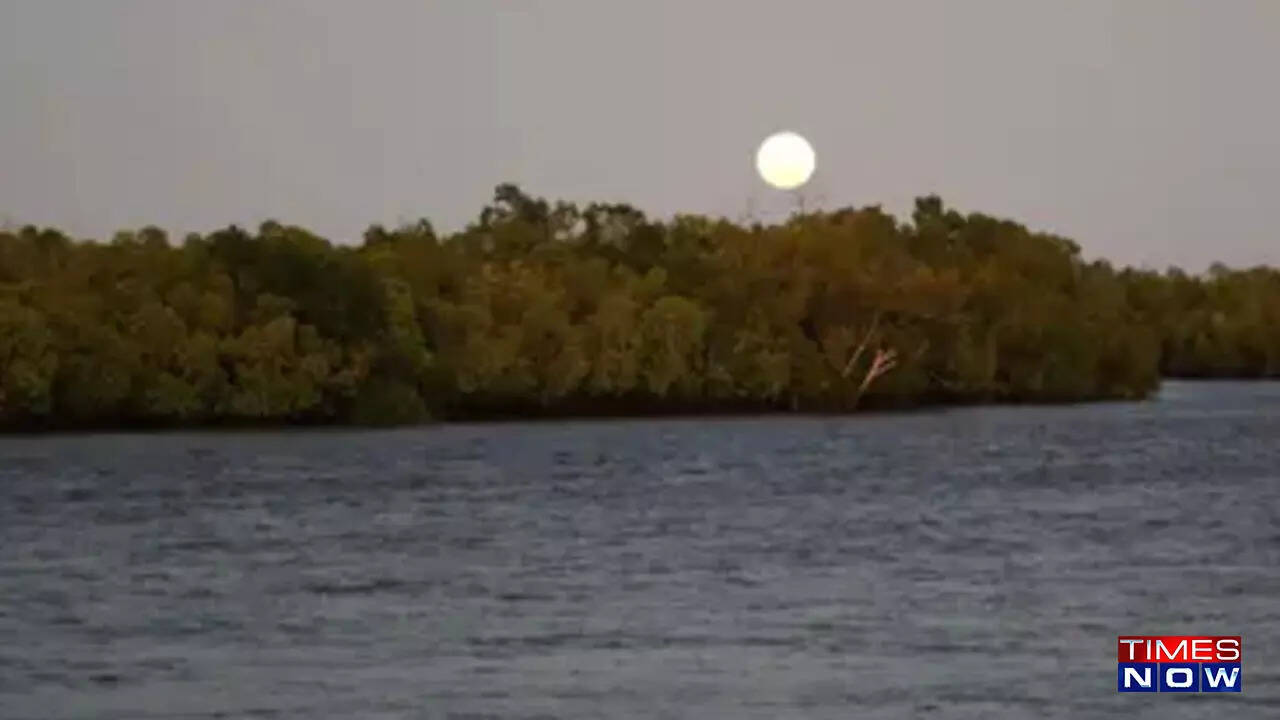Controlled by the moon! Researchers find that mangroves expand and contract as per lunar pull
This revelation is critical for determining when mangrove stands, which are good at carbon sequestration and may aid in the fight against climate change, are most likely to grow.

September 27, 2022: A new study indicates that the moon plays an important role in the health of such trees.
Long-term tidal cycles caused by the moon drive the expansion and diminution of mangrove forests in Australia, according to a study published in Science Advances on September 16. This revelation is critical for determining when mangrove stands, which are good at carbon sequestration and may aid in the fight against climate change, are most likely to grow. Such understanding could help to maintain and revitalize forests.
Mangroves are coastal trees that offer habitat for fish as well as protection from erosion (SN: 9/14/22). However, in some areas, the woods are threatened by a variety of factors, notably coastal development, pollution, and land removal for agriculture. Neil Saintilan, an environmental scientist at Macquarie University in Sydney, and his coworkers used satellite photos to acquire a bird's-eye view of these woodlands. The researchers evaluated how the area and richness of mangrove forests in Australia evolved through time using NASA and US Geological Survey Landsat data from 1987 to 2020.
Following the accounting for the consistent rise in these trees' proliferation, which was most likely caused by rising carbon dioxide levels, increasing sea levels and growing air temperatures, Saintilan, and his colleagues discovered an unusual trend. Mangrove forests had a systematic expansion and contraction in both extent and canopy cover. As Saintilan explained, he said that he "saw this 18-year oscillation.”
The researchers were inspired by the moon's periodicity. Earth's nearest celestial neighbour has long been believed to aid in the movement of tides, which give water and nutrients to mangroves. The authors theorised that a rhythm known as the lunar nodal cycle could describe the mangroves' developmental process.
The plane of the moon's orbit around Earth gradually tilts over the course of 18.6 years. Semidiurnal tides, which include both high and two low tides each day, are likely to have a broader range when the moon's orbit is the least inclined close to our planet's equator. This indicates that in places with semidiurnal tides, higher high tides and lower low tides are more frequent. The angle at which the moon pulls gravitationally on the Earth causes the phenomenon.
Saintilan and his colleagues discovered that mangrove forests subjected to semidiurnal tides were larger and thicker exactly when higher high tides were predicted depending on the moon's orbit. The influence appeared to surpass other climate factors of mangrove growth, such as El Nino. The team believes that other mangrove-rich regions, such as Vietnam and Indonesia, are likely to see similar long-term patterns.
Saintilan credits his finding to having access to data dating back decades, saying, “We’ve never really picked up before some of these longer-term drivers of vegetation dynamics.”
This impact on mangrove populations must be recognised, according to Octavio Aburto-Oropeza, a marine biologist at the Scripps Institution of Oceanography in La Jolla, Calif., who was, however, not associated with the research.
Scientists now know when certain mangroves are most likely to thrive and should make extra efforts to encourage the establishment of these carbon-sequestering trees, according to Aburto-Oropeza. That might appear as additional restrictions on neighbouring human activity that could damage the forests, he argues. "We should be more proactive."
This article is written by Diya Mukherjee
Trending:
End of Article
Subscribe to our daily Newsletter!





Related News





Vivo V30e Launch Date In India Is May 2: Price, Specifications, What To Expect

Google Maps And Search Updates Prioritize Ev Users And Sustainable Travel Options

Still Waiting For GTA 6? Explore These Hidden Locations In GTA 5

5 Best Earbuds Under Rs 2000 From OnePlus, Realme, boAt And More

Apple Removes WhatsApp, Telegram, Signal And Threads From China App Store; Here's Why









